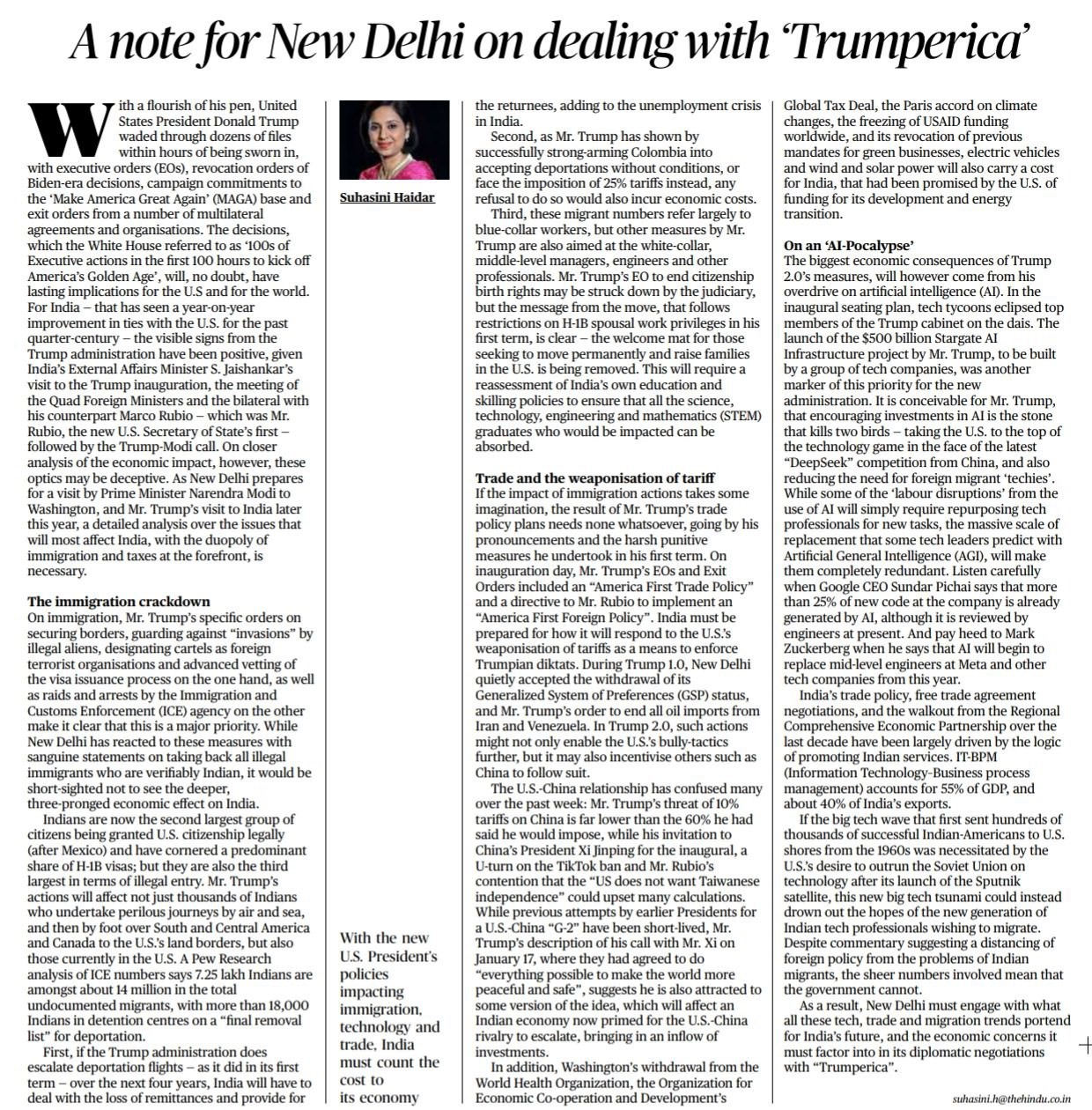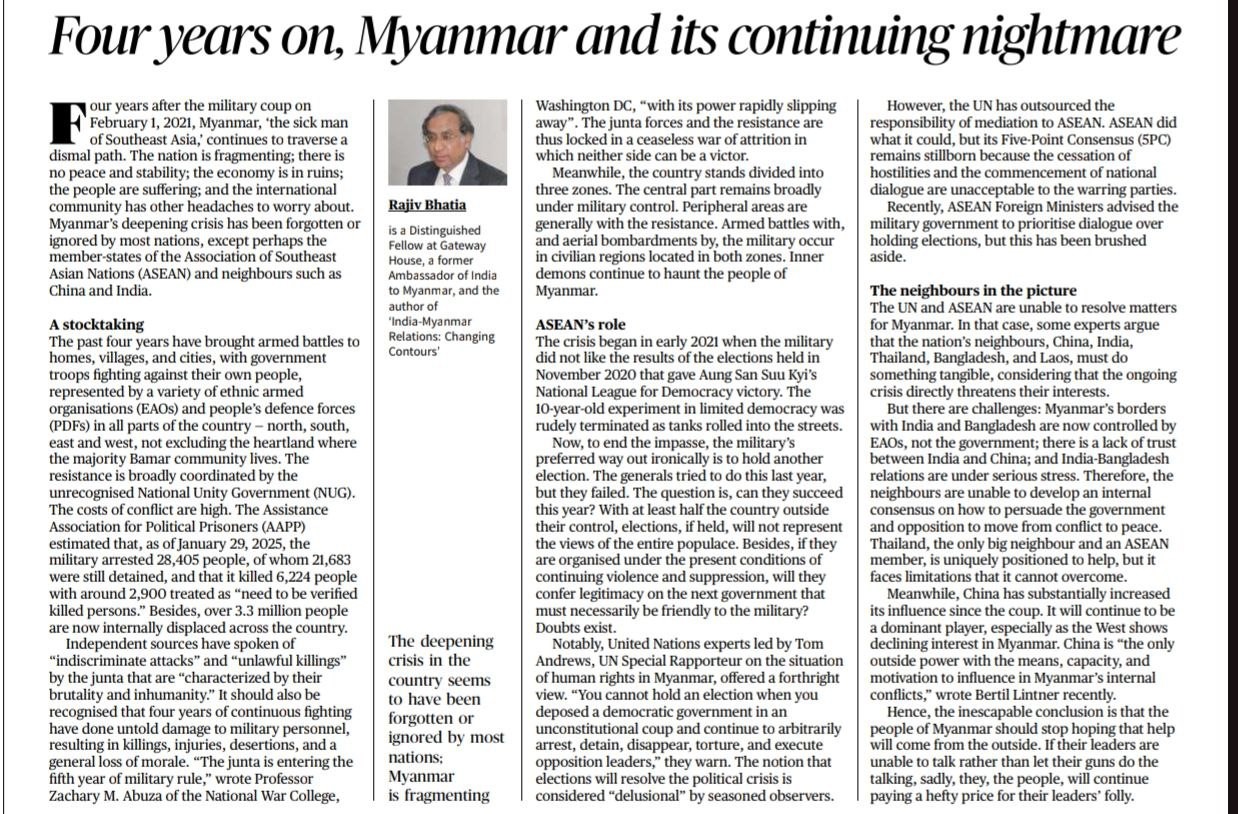1. Navigating Indo-U.S. Relations in the Era of 'Trumperica'
Introduction:
The article discusses the implications of former U.S. President Donald Trump’s policies on India and the broader international community. It highlights the challenges and opportunities that arose from Trump’s “America First” agenda and its focus on immigration, trade, and multilateral agreements.
- Immigration Challenges:
- Trump’s executive orders prioritized curbing illegal immigration and tightening visa regulations.
- Impact on Indian workers, particularly H-1B visa holders, resulting in job insecurity and increased scrutiny.
- India’s diplomatic response emphasized the importance of skilled Indian workers in the U.S. economy.
- Trade and Economic Policies:
- The imposition of tariffs and renegotiation of trade agreements under Trump’s administration impacted global markets, including India.
- Withdrawal from multilateral agreements like the Paris Climate Accord and the Trans-Pacific Partnership (TPP) shifted global trade dynamics.
- India’s need to reassess its trade policies and seek new economic partnerships.
- Geopolitical Repercussions:
- S. foreign policy under Trump saw a reduction in aid and support for international organizations, affecting global stability.
- India’s strategic diplomacy aimed at balancing relations with the U.S. while maintaining autonomy in foreign policy.
- The significance of India-U.S. defense collaborations in countering regional threats and enhancing security cooperation.
Conclusion:
The Trump era posed distinct challenges for India, from immigration policies affecting its diaspora to trade barriers impacting economic growth. Navigating these challenges required strategic diplomacy and recalibration of India’s foreign policy. As global dynamics continue to evolve, India’s approach towards U.S. relations must remain adaptive and forward-looking.
Bottom of FormMains Practice Question |
Q. Critically analyze the impact of U.S. foreign policy under President Donald Trump on India’s economic and strategic interests. How should India navigate its bilateral relationship with the U.S. in a rapidly changing global order? (250 words) |
2. Myanmar’s Ongoing Crisis: Four Years After the Coup
Introduction:
The military coup in Myanmar on February 1, 2021, led to severe political instability, economic collapse, and humanitarian distress. The country remains fragmented, with armed resistance groups challenging the military junta. Despite international concerns, Myanmar’s crisis has largely been ignored, except by neighboring countries like India and China.
- The Current Situation in Myanmar:
- Ongoing conflict between the military and ethnic armed organizations (EAOs) and People’s Defence Forces (PDFs).
- The unrecognized National Unity Government (NUG) is leading the resistance.
- Severe human rights violations, including mass arrests, killings, and displacement of over 3.3 million people.
- Role of ASEAN and International Community:
- ASEAN’s Five-Point Consensus (5PC) remains ineffective due to ongoing violence.
- The UN has delegated mediation responsibility to ASEAN but lacks direct involvement.
- Western nations have limited influence, whereas China has expanded its role in Myanmar’s internal affairs.
- Impact on Regional Stability and Neighbors:
- Myanmar’s borders with India and Bangladesh are controlled by insurgent groups, raising security concerns.
- India’s strategic interests, including trade and border security, are affected.
- China’s growing influence in Myanmar is reshaping regional geopolitics.
Conclusion:
Myanmar’s crisis remains unresolved, with no clear path to peace. The military’s attempts to hold elections are widely viewed as illegitimate. Regional and global stakeholders must engage more actively to facilitate a peaceful resolution, or Myanmar will continue its descent into chaos.
Mains Practice Question |
Q. Discuss the impact of the 2021 military coup in Myanmar on regional stability. How should India and ASEAN respond to the ongoing crisis? (250 words) |



